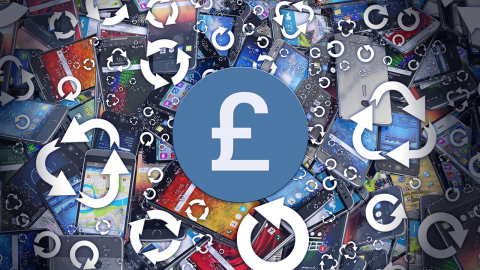

Android is now the number one operating system in the world. What was once seen as an impossible feat has actually happened. You may think this is not a big deal but it actually is. It shows a distinct change in the way people are using personal computers.
Windows has long been the dominant operating system in the world and for a long time; it was once seen as untouchable. Android has just overtaken it as the number one platform for getting online. This is in addition to Gartner’s statistics for worldwide device shipments, which see Android in a commanding lead at over 1.3 billion devices in 2015. The shift to mobile computing is happening at an alarmingly quick rate, while desktop sales continue to decline at a rate of 7.2% year-on-year for 2016. Doomsayers have long said that the demise of the desktop PC is near, though this is quite a sensationalist statement. The desktop computer will never die because end-users always demand power when necessary. A larger space with more efficient cooling allows for higher performance chipsets, something that small-form devices will never be able to compete against. That’s not even science, it’s just common sense. It’s also fair to say that not everyone in a family will own/need their own desktop PC, while everyone in the average western family will now own his/her own mobile device.
We can trace the rapid demand in mobile operating systems back to how our interaction with the web has changed. During the 1990’s, the internet used to be a place reserved for the affluent. A standard desktop computer would hit $2000, with laptops hitting around $3000. The Compaq LTE was a powerful laptop device at the time with a massive 640KB RAM and 9.55MHz CPU; that alone cost $4000 without the memory upgrades (up to 4MB!!!). In today’s world, getting online is cheaper and easier than ever. Getting a smartphone with a data connection is all you need, which is why many developing countries are seeing a huge rise in internet usage. As of 2015, 54% of adults in 21 developing countries are now online, up from 45% in 2013. Many phones in these areas choose to forgo the Android Trademark altogether, instead using a basic version of the source code to avoid costs. This still counts as an Android install and subsequently, an Android user. In the UK, second hand Android devices can be picked up on eBay for as little as £10, while mobile phone recycling services offer programs where old smartphones can be donated to developing countries. Thanks to the open-source nature of the software and declining manufacturing costs, it’s the primary reason why Android is enjoying such success worldwide. This is compounded when you realise that mobile devices are no longer dumb phones that offer basic calling and nothing else. The average Android phone can run most tasks to a satisfactory standard, even on the oldest hardware. In fact, Android 2.3 Gingerbread is still the most popular OS in developing markets.
The idea of a globilised internet has always been something that it’s founder, Tim Berners Lee, has championed in various interviews. He told the BBC way back in 2003, when the internet was only just beginning to show promise as a global communication medium, of his hopes for the future: “The original idea of the web was that it should be a collaborative space where you can communicate through sharing information”. Accessible hardware is now a possibility to developing countries, with only the framework and infrastructure presenting a challenge. Just two percent of African households have a landline connection, while full 3G/4G coverage is expected in sub-Saharan Africa by 2020. Ericsson’s Sustainability and Corporate Responsibility Report 2014 has predicted that 85% of growth in 3G and 4G connectivity will be in Asia Pacific, the Middle East and Africa. There’s even predictions that as the uptake of smartphone use in developing countries continues, it could help the electrical infrastructure in the process. It makes sense, especially as mobile devices need power like any other electrical device.





